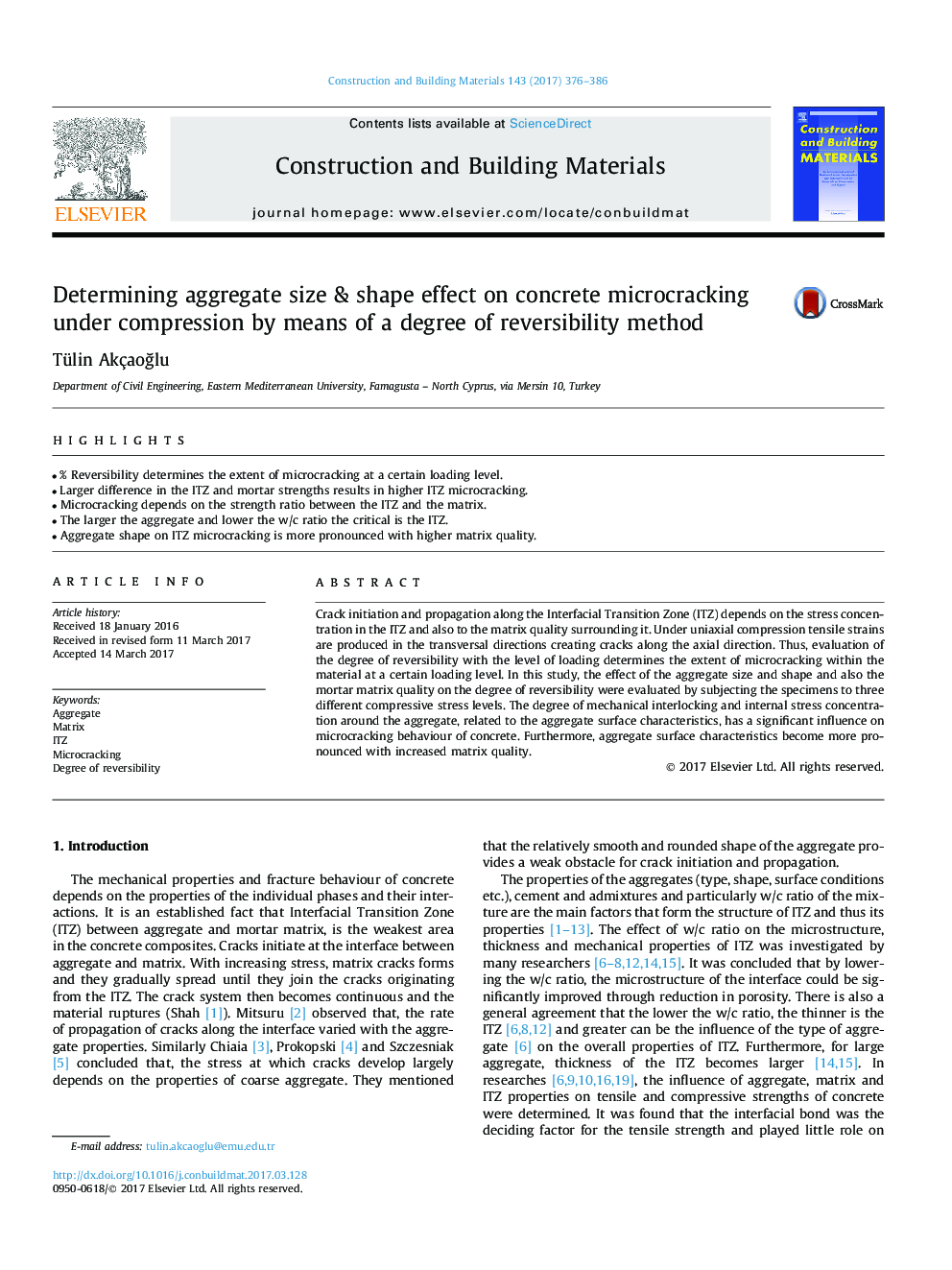| Article ID | Journal | Published Year | Pages | File Type |
|---|---|---|---|---|
| 4913246 | Construction and Building Materials | 2017 | 11 Pages |
Abstract
Crack initiation and propagation along the Interfacial Transition Zone (ITZ) depends on the stress concentration in the ITZ and also to the matrix quality surrounding it. Under uniaxial compression tensile strains are produced in the transversal directions creating cracks along the axial direction. Thus, evaluation of the degree of reversibility with the level of loading determines the extent of microcracking within the material at a certain loading level. In this study, the effect of the aggregate size and shape and also the mortar matrix quality on the degree of reversibility were evaluated by subjecting the specimens to three different compressive stress levels. The degree of mechanical interlocking and internal stress concentration around the aggregate, related to the aggregate surface characteristics, has a significant influence on microcracking behaviour of concrete. Furthermore, aggregate surface characteristics become more pronounced with increased matrix quality.
Keywords
Related Topics
Physical Sciences and Engineering
Engineering
Civil and Structural Engineering
Authors
Tülin AkçaoÄlu,
